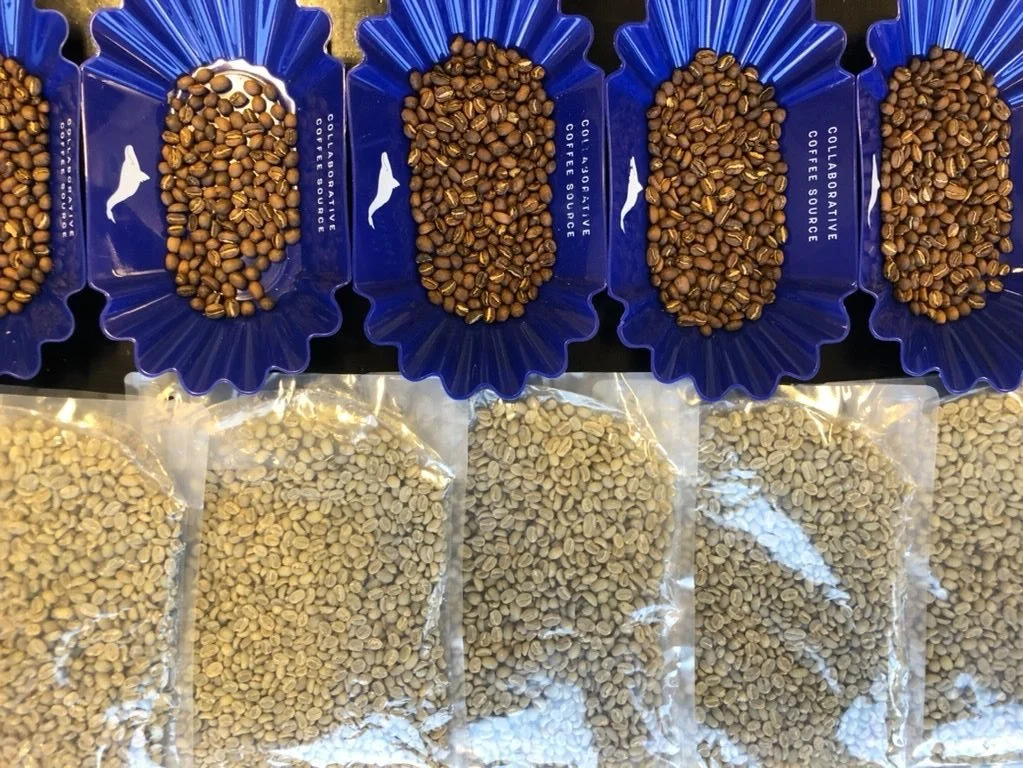Innovation in Shipping
Our visit to Ethiopia a few weeks back was only my second time at origin. I expected to be inundated with information pertaining to all aspects of coffee production. After all, everything you are experiencing at that time and place is the precursor to the longevity and quality of the coffee, more so than during any other time in a coffee’s life cycle. If things are out of sorts at origin, the coffee is unlikely to express what it is capable of. It’s heavy stuff.
On top of this, I had just started a new position in Buying, QC & Sample Management at the Collaborative Coffee Source. That makes me the link between the producer’s hard work and the coffee community yearning for long lasting quality beans. My focus on this trip was to understand what is being done and what could be done better next time around. Altering fermentation times? Thinner layers on the drying bed? More selective picking? All seemed to be common suggestions that are given to producers and are absolutely key to improving quality and longevity! But perhaps the most interesting thing I learned during the trip was an innovation I’d never heard of: refrigerated containers.
Heleanna Georgalis of Moplaco Trading has been using these "reefer containers" for one customer for a few years now, and her customer speaks very highly of the results. Coming from George Howell Coffee, famous for pioneering the freezing of green coffee, I’m well aware of the positive and lasting effects that climate control provides. As you can imagine, I was excited and astonished to learn that refrigerated containers exist.
Moplaco Trading, Addis Ababa
Reefer Containers - How Do They Work?
Coffee harvested and processed in Ethiopia will make its way to the Port of Djibouti, located about 400km away on the shores of the Red Sea. There the coffees are transferred into a reefer container and stored at 18°C (64°F) and 60% humidity for the remainder of its (often) month-long journey across the ocean. Nitrogen, oxygen, carbon dioxide levels are also regularly checked to ensure proper storage.
The pallets are loaded in and arranged with air space between the coffee and the wall, while air is circulated throughout the container to prevent pockets. Refer to the graphic below (courtesy of www.cma-cgm.com):
How Much Does It Cost?
For the time being, only 40 foot containers are available to be refrigerated (the standard size is 20 foot). Why is this? Well, since 2000, the number of companies moving reefer container ships has dropped by 60%, so availability is very low. Companies who purchase reefer ships need twenty years to recover the initial cost, versus two years for a normal container ship.
But, there is hope. One company, Seatrade Reefer Containers, continues to purchase and use reefer containers in their fleet. Due to the slower delivery times of container ships over the last few years, shipments (from all goods industries) are getting to their destination well after their intended arrival dates. Late shipments have translated into more food spoilage. Seatrade hopes these delays in container delivery will cause an increased need for reefer containers, and a resulting increase in their availability. But for now, they are still a cost to consider carefully.
This means there are two options:
- Find a way to fill a 40 foot container. This either means purchasing large volumes, or sharing containers with other buyers.
- Move a container below maximum capacity. Of course, this is a more expensive option as the cost is spread out over a smaller volume.
Costs fluctuate, but the breakdown at the time of writing is this: if a normal 20 foot container costs around $900 to move from Ethiopia to your nearest port, the cost is 2.1 cents per pound. A max capacity 40 foot reefer container, over the same distance, would cost around $2,900, or 3.4 cents per pound. A 40 foot reefer container, filled to half capacity, then would then cost 6.8 cents per pound.
Does refrigerated shipping provide enough value to justify this additional expense? Could you make the money back by having your 88-point Ethiopian coffee hold up for two extra months? Being cost conscious is entirely necessary for a business to be sustainable so your budget may not lend itself to this kind of transit. However, for around ten dollars more per 60 kilo bag, it may be a wise investment not having to discard bad roasts of tired coffee.
Logistical Considerations
To arrange reefer containers for your coffee we'll need some advanced notice. As mentioned, containers are currently limited in quantity and require a bit extra planning. However we think it's worth the extra effort. For now we are offering reefer containers from Ethiopia and we hope to add more origins in the near future.
Please contact me if you have questions! I am excited by the potential of this shipping innovation and keen to discuss how reefer containers might work for you.
Matt








